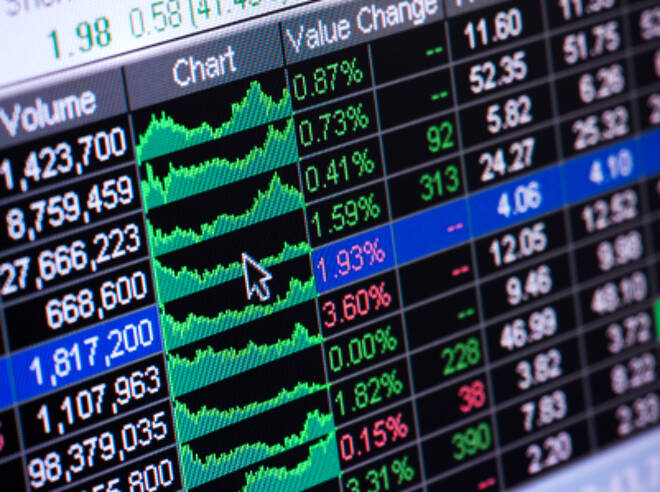Advertisement
Advertisement
Weakening Consumer Spending, Fed Rate Cut Pause, Trade Deal Uncertainty – All Reasons to Trim Stock Positions
By:
The warnings signs are there for investors to at least lighten up on the long side in the stock market. My advice is to start looking for value areas and to try to avoid investing on the fear that you are going to miss a major rally.
Weak earnings may have lit the fuse for Tuesday’s mixed-to-weaker performance on Wall Street, but uncertainty over the progress of U.S.-China trade negotiations certainly had a hand in encouraging much of the selling.
For weeks, U.S. investors have been riding the waves of positive chatter on the trade deal, better-than-expected earnings, and a third rate cut by the Fed, to record highs. But they may have forgotten that it’s a two-sided game. The same events that drove prices higher may be signaling they are ready to take back some of those gains.
In the cash market on Tuesday, the benchmark S&P 500 Index settled at 3120.18, down 1.85 or -0.06%. The blue chip Dow Jones Industrial Average closed at 27934.02, down 102.20 or -0.38% and the tech-based NASDAQ Composite finished at 8570.66, up 20.72 or +0.26%.
Weak Earnings Spook Bulls
During the pre-market session on Tuesday, U.S. futures were pointing toward a higher opening after the December contracts reached record highs. At that time, U.S. investors were following the herd in Asia in driving prices higher despite Monday’s late session report that said China was pessimistic about reaching a trade agreement.
The futures contracts peaked and turned lower after Home Depot reported disappointing same-store sales that overshadowed better-than-expected earnings. The 5.4% drop in shares of Home Depot shaved about 88 points from the Dow. Prices were driven further lower after shares of Kohl’s tanked more than 19% on weak same-store sales.
The common factor between Home Depot and Kohl’s is U.S. consumer spending. We’ve seen throughout the year that the economy has been held together by the consumer. So any signs of weakness in consumer spending is going to cause an exaggerated response by investors.
Fed Pauses on Rate Cuts
There is no question the Fed played a role in driving stock prices higher with its three rate cuts since July. The recent buying spree since the last cut on October 30 suggests investors don’t care too much about value, but rather about missing the next major rally. Furthermore, investors seem to think that if the market were to weaken substantially, the Fed would be there holding a safety net.
But can you blame them? Last week, Fed Chair Jerome Powell painted an optimistic picture of the U.S. economy though he did warn that threats to the outlook persisted.
Powell also said the Fed may shift policy to a wait-and-see mode as it tries to gauge whether further action is necessary.
“We see the current stance of monetary policy as likely to remain appropriate as long as incoming information about the economy remains broadly consistent with our outlook,” he reiterated.
Powell seems to be counting on trade tensions to ease, employment to hold steady or improve and for consumers to continue to spend. But what would happen to stocks if one or all of these factors suddenly changed?
U.S.-China Trade Deal Issues
Despite last week’s optimistic comments from U.S. and Chinese officials regarding the progress of U.S.-China trade talks, in my opinion, the two sides are as close as they were in May when the trade talks collapsed.
Late Tuesday, President Trump complicated matters when he threatened to raise tariffs on Chinese goods if the two economic powerhouses do not strike a deal.
This increases the uncertainty for investors and also give them one more excuse to book profits, trim positions and perhaps side on the sidelines until there is more concrete evidence that the two side are close to reaching an agreement.
Conclusion
The warnings signs are there for investors to at least lighten up on the long side in the stock market. My advice is to start looking for value areas and to try to avoid investing on the fear that you are going to miss a major rally.
Signs of slower consumer spending, a pause in rate cuts and unstable trade negotiations are not reasons to chase stocks higher.
About the Author
James Hyerczykauthor
James Hyerczyk is a U.S. based seasoned technical analyst and educator with over 40 years of experience in market analysis and trading, specializing in chart patterns and price movement. He is the author of two books on technical analysis and has a background in both futures and stock markets.
Advertisement
